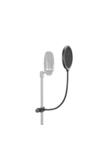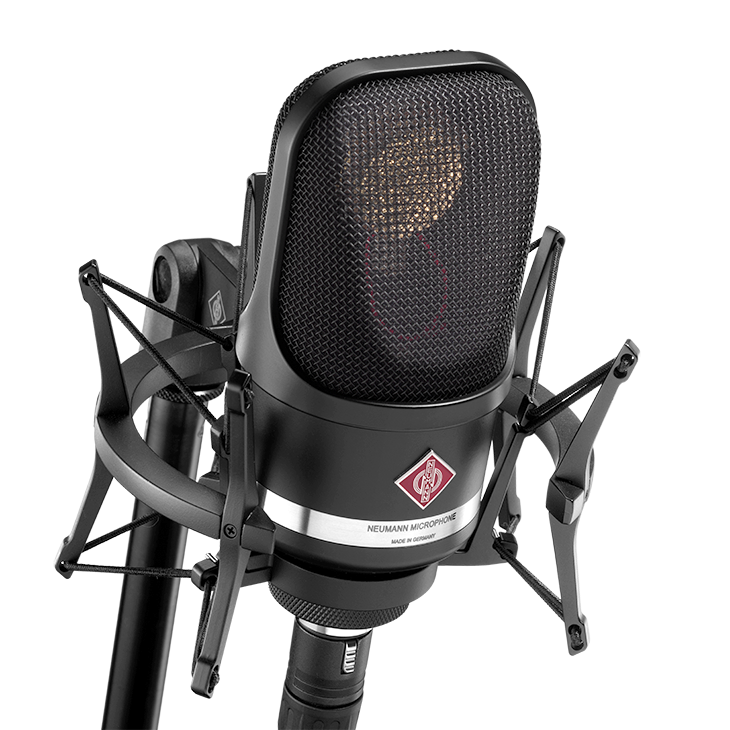The Neumann M 49 is without question one of the great microphone legends. Its incomparably full and silky sound remains unmatched to this day. Stars such as Barbra Streisand, Neil Diamond, and Huey Lewis even bought their own M 49 microphones in order to bring out the best in their voices in every studio. Although, as a matter of fact, the M 49 was not developed specifically for vocal recordings, but as a universal microphone.
Its development was initiated by the broadcast sector. Until the end of the 1940s, trying a different directional pattern meant exchanging the entire microphone or at least the capsule head. This did not change until 1949 with the introduction of the Neumann U 47, the first microphone that allowed electronical switching between cardioid and omnidirectional mode. The broadcasting community wanted a microphone that went even further and could be continuously adjusted from omnidirectional to cardioid to figure-8. In addition, the directional characteristic was to be remotely switchable from the control room. Not only was this convenient, it also allowed the selection of the most suitable polar pattern under optimal listening conditions. A great advantage when, as was common at the time, even large ensembles such as orchestras and big bands had to be recorded with just a few microphones. At the same time, the broadcast industry expected a simplification of its equipment inventory, as this uncompromising universal microphone would cover almost every conceivable application.
The first prototypes were developed at Nordwestdeutscher Rundfunk (NWDR) under the direction of Dr. Herbert Großkopf. Neumann secured his patent for the continuously switchable directional characteristic and produced the M 49 starting in 1951.
Thanks to its revolutionary technology and its balanced sound in all directional patterns, the M 49 easily held its own alongside the U 47, which had been introduced only two years earlier, even though the M 49 was considerably more expensive. No other Neumann microphone of the tube era was manufactured for a longer time: a full 20 years, from 1951 to 1971; the last units were sold until the mid-1970s. To this day, the M 49 remains one of the most sought-after studio microphones, especially for vocal recordings.
Masterwork in Progress The M 49 was produced in different versions.
- The original version used a tube specially developed for microphone applications by the Hiller company, the MSC2.
- From 1954/55 on, the Hiller tube was replaced by a lower noise tube from Telefunken, the AC701, which was specifically developed for microphones.
- In 1957, the M 49 b appeared with a new output transformer (BV11) and some circuit changes. This reduced distortion and increased sensitivity. In addition, there now was an internal switch to deactivate the rear diaphragm, so that the M 49 operates with a fixed cardioid characteristic. This increased the signal-to-noise ratio by about 3 dB.
- Starting in 1958 (serial number 1600), an improved low-microphonics version of the Telefunken tube was installed, the AC701k.
- Around the same period, the M7 capsule originally used was replaced by the improved K 49 version. Acoustically, both capsules are almost identical. The K 49 offers manufacturing advantages that ensure better symmetry of the front and rear systems. In addition, the diaphragm material of the K 49 is much more durable than the PVC used previously, which becomes brittle over the years.
- In 1964, the M 49 c was released, with further circuit changes. By changing the tube operation from "fixed bias" to "self-bias", noise could be reduced again. This was and is the most popular revision; many older M 49 microphones were later converted to the circuit version c.
In parallel, a special broadcast version was produced from 1961 on. The M 249 uses an RF-proof 7-pin Tuchel connector instead of the bayonet connector. Again, there are different revisions:
- The M 249 (without suffix) was produced only from October to November 1961.
- The M 249 b, introduced in November 1961, is technically equivalent to the M 49 b
- The M 249 c from 1964 on corresponds to the M 49 c
The M 49 V Compared to Its Predecessors























































